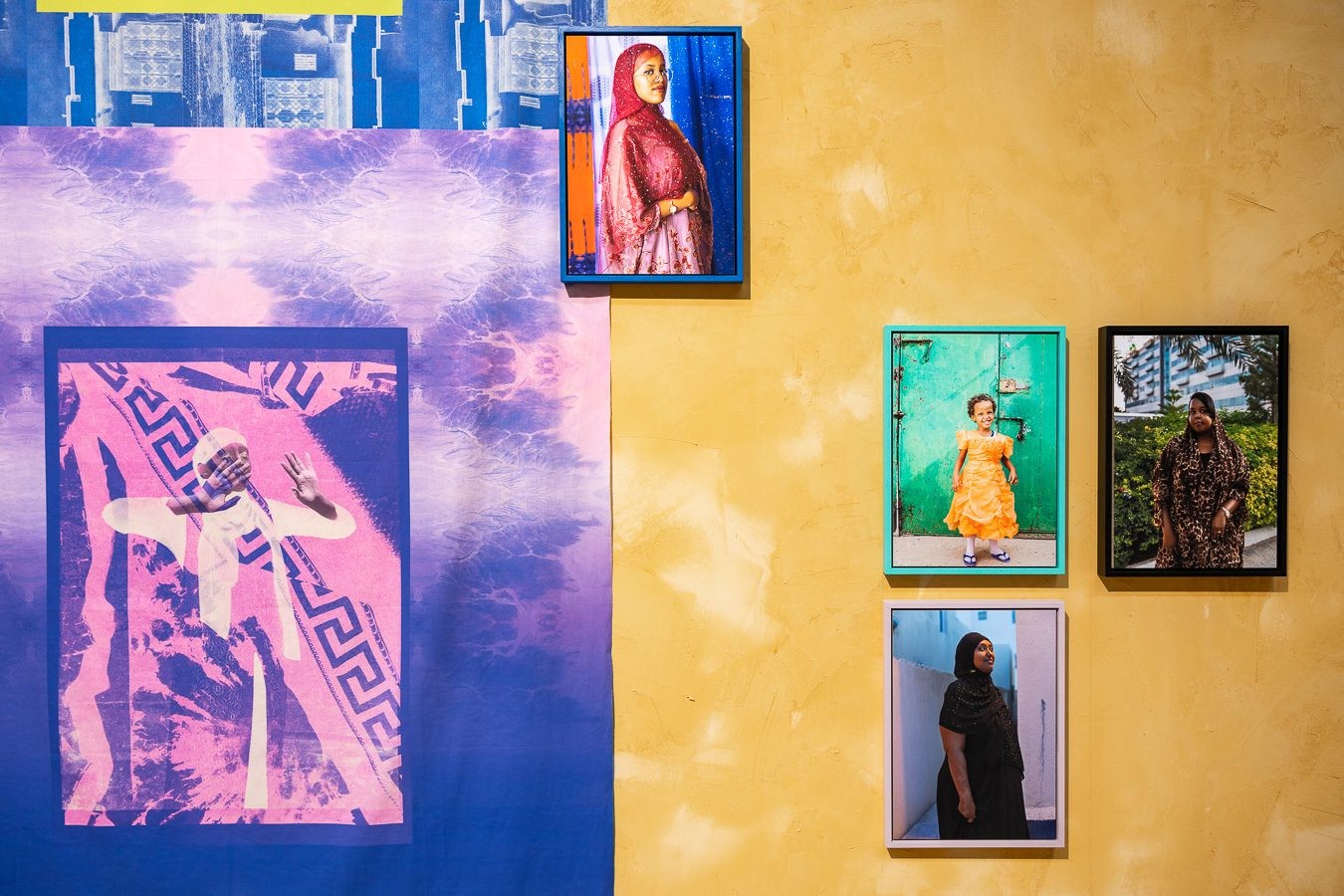Complicating Pan-Africanism

12 November 2015
Magazine C& Magazine
Words Liese Van Der Watt
4 min read
Chimurenga doesn’t just think Africa, it also “does” Africa, finds Liese Van der Watt.
When an art space hosts an “outfit” that is intended to “infiltrate” its existing structures, it is clearly taking an unusual approach to art and art making. Liese van der Watt looked in on Chimurenga, the Cape Town–based “project-based mutable object,” at The Showroom in London.
Over the last thirty-odd years, The Showroom has established a reputation for championing collaborative and process-driven work. As such, they hosted The Otolith Collective in 2009, a two-person art group that was nominated for the Turner Prize a year later. Elaborating on this connection, The Showroom and The Otolith group have now worked with Chimurenga to curate the latter’s first UK appearance.
Chimurenga, a Shona word that roughly translates as “struggle for freedom,” was established by Cameroonian Ntone Edjabe in Cape Town in 2002 to publish, broadcast, showcase, articulate, make, write, research, and archive art and culture relating to Africa. It is a many-faceted vehicle, a multi-pronged platform, a mobile think-tank, an elastic object, and a collaborative initiative for thinking about and across Africa.
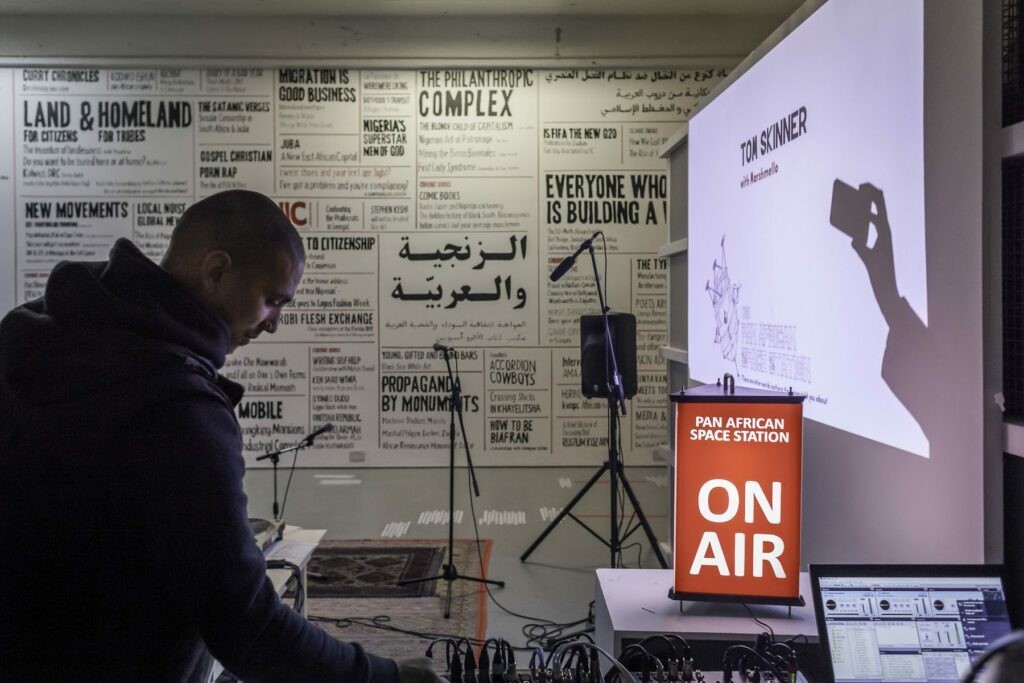
Preview of The Chimurenga Library at The Showroom, London 2015 Photo: Dan Weill. Courtesy Chimurenga, The Otolith Collective and The Showroom.
But it doesn’t just think Africa, it also “does” Africa. Installed at The Showroom for one week was the pop-up studio of their Pan-African Space Station (PASS) where Edjabe and fellow Chimurenga members Graeme Arendse and Ben Verghese broadcasted music, events, and interviews with various compelling collaborators in London, ranging from artists to writers, musicians, journalists, and filmmakers. Recordings and images of these exchanges will become part of Chimurenga’s archive and will be available in/as the ongoing installation at The Showroom.
While these interviews were taking place, gallery visitors were free to hang around, listen in, and spend time looking at the text on the walls around the studio or to follow one of various “mapped” routes upstairs in the gallery. These wonderfully imaginative maps, also reproduced in the latest issue of their magazine The Chronic, essentially visualize Africa through various spatial routes which have little to do with physical or geopolitical borders. There is the African War Machines map, a complicated flowchart visualizing a galaxy of interconnected and dependent transactions across Africa and external partners; there is the story of Africa as told through its search for and conflicts over water; and there is Africa mapped by its drug ports, by its soccer cities, and by the routes of corrupt “neopats” (new migrants from Asia and Europe) and returning “repats” (Africans who had previously migrated elsewhere).
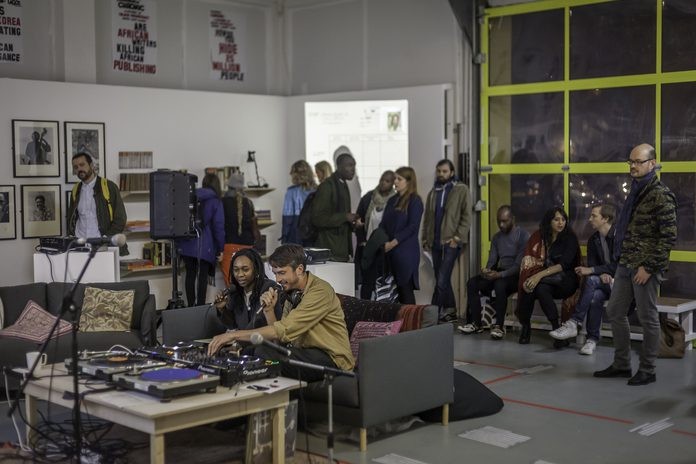
Preview of The Chimurenga Library at The Showroom, London 2015 Photo: Dan Weill. Courtesy Chimurenga, The Otolith Collective and The Showroom.
Like any map, these fascinating charts and atlases are clearly artifacts, and they are often highly, and probably intentionally, contested. How else does one explain the description of the Royal Bafokeng Nation in South Africa as a “secret country”? But they make the point loud and clear that Africa is indeed not a country, but a networked continent of variety, difference, interdependences, and alliances. A recent issue of The Chronic was wholly published in Arabic, in an effort to problematize the crude distinctions made between so-called “Arab” Africa and sub-Saharan Africa – a theme that was addressedat the recent 1:54 Art Fair, with its North African focus.
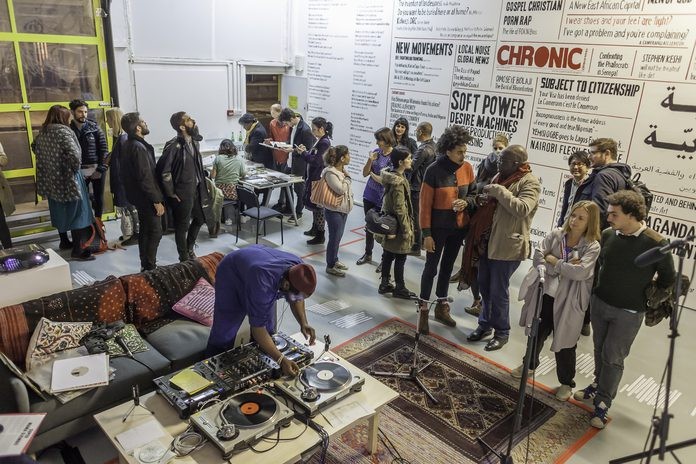
Preview of The Chimurenga Library at The Showroom, London 2015 Photo: Dan Weill. Courtesy Chimurenga, The Otolith Collective and The Showroom.
At The Showroom, one focus area is FESTAC ’77, the second Black and African Festival of Arts and Culture held in Lagos in 1977, in an effort to foreground and problematize the notion of pan-Africanism, a construct that has always stood central to Chimurenga’s analytical gaze. In the latest The Chronic, writer and philosopher Achille Mbembe prefers what he terms “Afropolitanism” to pan-Africanism, a concept that Mbembe says “makes Africa the point of encounter for different migratory movements” (p. 2). It is this expanded notion of pan-Africanism – as visualized in the imaginative maps and routes, as defined in the physical connections encouraged between cultural workers from different places, as embodied in the networks of exchange across continents – that informs Chimurenga’s daily practice.
The Chimurenga Library at The Showroom, London until November 21, 2015
and at the Performa 15, New York, November 11-15, 2015.
Liese Van Der Watt is a South African art writer based in London.
Read more from

Maktaba Room: Annotations on Art, Design, and Diasporic Knowledge

Irmandade Vilanismo: Bringing Poetry of the Periphery into the Bienal
Read more from

On Exile, Amulets and Circadian Rhythms: Practising Data Healing across Timezones
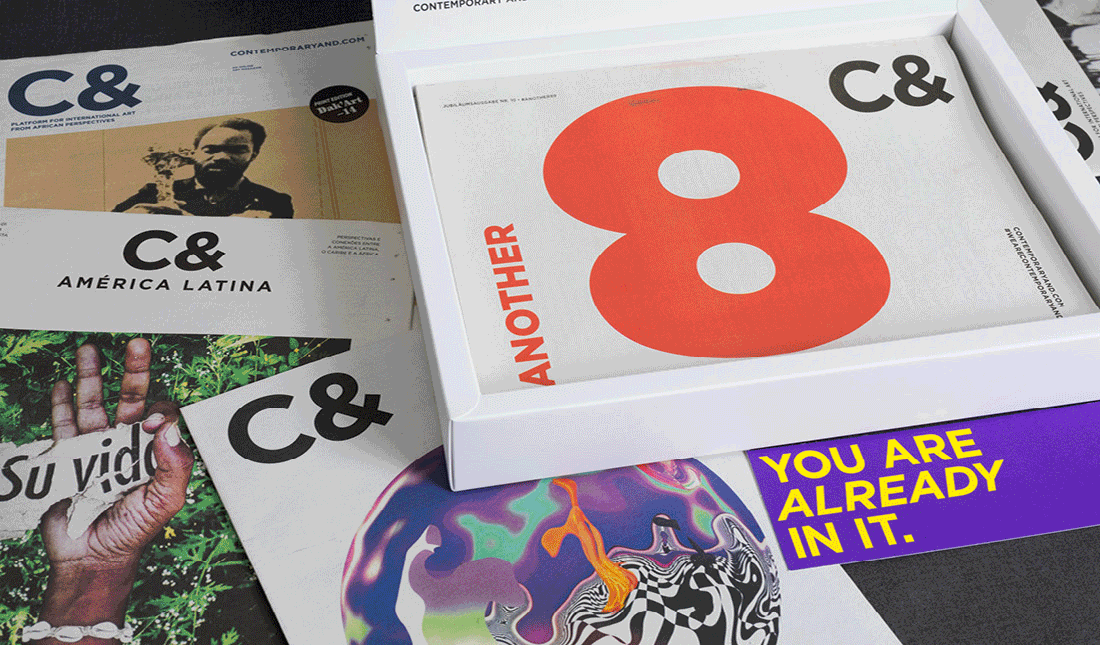
Bring Home your C& Collectors Box!
